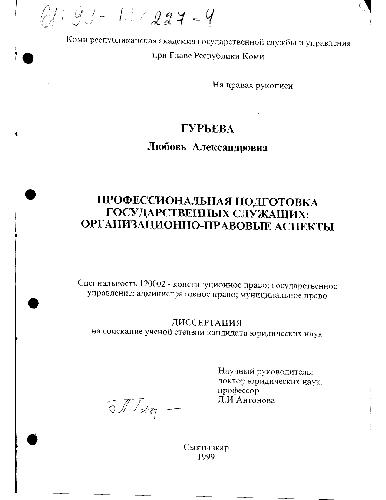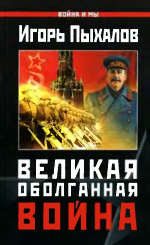- 2 402 202 книги
- Поиск
libcats.org









Web 2.0 Principles and Best Practices (O'Reilly Radar)
O'ReillyThe term "Web 2.0" has started to become the hot new label slapped on internet sites to make them "cool". As such, the words have become somewhat muddled as far as what it actually means. Since O'Reilly came up with the term, perhaps it's best to go back to that source to discover what Web 2.0 really means. John Musser (with Tim O'Reilly and the O'Reilly Radar team) does just that in the O'Reilly Radar report Web 2.0 Principles and Best Practices. I found this really cuts through the hype and confusion...
Contents:
Executive Summary
Section 1 - Market Drivers of Web 2.0: Six Key Market Drivers
Section 2 - Ingredients of Web 2.0 Success: The Eight Core Patterns; Web 2.0 Patterns and Practices Quick Reference
Section 3 - Web 2.0 Exemplars: Web 2.0 Profile - Amazon.com; Web 2.0 Profile - Flickr.com
Section 4 - Web 2.0 Assessment
Appendix A - Web 2.0 Reading List
Appendix B - Technologies of Web 2.0
Endnotes
Because this is a 100 page report and not a book that's fluffed out to 300 pages, you are getting core information distilled down to the essentials. Musser starts out with a summary that explains how the web has changed in terms of applications and usage, broken down into eight core patterns. Using real examples of companies like MySpace.com, eBay, and many others, he notes how the time of static web pages and PC-only access has gone by the wayside.
Section 1 goes into what is driving this dramatic change in thinking and interaction. The global nature of customers, "always-on" connectivity, and connectivity everywhere are a few of the forces that are shaping the evolution and direction of how sites have to interact with users. Section 2 gets into the meat of the eight patterns, such as harnessing collective intelligence, "data is the next 'Intel Inside'", and rich user experiences. Each of the eight patterns has an overview, benefits, best practices, issues & debates, misconceptions, Enterprise 2.0 recommendations, and related patterns. So in the space of six to eight pages, you get a complete understanding of how Web 2.0 has changed the thinking behind what's important, as well as real examples (good and bad) of sites who have made it happen. I found myself thinking about sites like Amazon and eBay much differently, knowing how they've implemented many of these patterns. Their actions have truly revolutionized what the web is all about.
Section 3 goes more in depth, examining Amazon and Flickr in a case study format. Amazon went from Web 1.0 to Web 2.0 and learned along the way. Flickr started at the Web 2.0 mark and incorporated much of the learning that was taking place. Again, these studies made me think about my own work and how it measures up to these standards. Section 4, the assessment section, is where you ask yourself a number of questions related to each of the patterns. These questions are designed to help you think about your company and product in terms of Web 2.0 principles and best practices, and guides you towards the changes in thinking that will help you make the transition to today's leading edge practices.
Overall, I thought this was a great read. Concise, logical, and backed up by excellent examples. If I were going to try and explain the whole Web 2.0 phenomenon to someone, this report is where I'd like to start...
Contents:
Executive Summary
Section 1 - Market Drivers of Web 2.0: Six Key Market Drivers
Section 2 - Ingredients of Web 2.0 Success: The Eight Core Patterns; Web 2.0 Patterns and Practices Quick Reference
Section 3 - Web 2.0 Exemplars: Web 2.0 Profile - Amazon.com; Web 2.0 Profile - Flickr.com
Section 4 - Web 2.0 Assessment
Appendix A - Web 2.0 Reading List
Appendix B - Technologies of Web 2.0
Endnotes
Because this is a 100 page report and not a book that's fluffed out to 300 pages, you are getting core information distilled down to the essentials. Musser starts out with a summary that explains how the web has changed in terms of applications and usage, broken down into eight core patterns. Using real examples of companies like MySpace.com, eBay, and many others, he notes how the time of static web pages and PC-only access has gone by the wayside.
Section 1 goes into what is driving this dramatic change in thinking and interaction. The global nature of customers, "always-on" connectivity, and connectivity everywhere are a few of the forces that are shaping the evolution and direction of how sites have to interact with users. Section 2 gets into the meat of the eight patterns, such as harnessing collective intelligence, "data is the next 'Intel Inside'", and rich user experiences. Each of the eight patterns has an overview, benefits, best practices, issues & debates, misconceptions, Enterprise 2.0 recommendations, and related patterns. So in the space of six to eight pages, you get a complete understanding of how Web 2.0 has changed the thinking behind what's important, as well as real examples (good and bad) of sites who have made it happen. I found myself thinking about sites like Amazon and eBay much differently, knowing how they've implemented many of these patterns. Their actions have truly revolutionized what the web is all about.
Section 3 goes more in depth, examining Amazon and Flickr in a case study format. Amazon went from Web 1.0 to Web 2.0 and learned along the way. Flickr started at the Web 2.0 mark and incorporated much of the learning that was taking place. Again, these studies made me think about my own work and how it measures up to these standards. Section 4, the assessment section, is where you ask yourself a number of questions related to each of the patterns. These questions are designed to help you think about your company and product in terms of Web 2.0 principles and best practices, and guides you towards the changes in thinking that will help you make the transition to today's leading edge practices.
Overall, I thought this was a great read. Concise, logical, and backed up by excellent examples. If I were going to try and explain the whole Web 2.0 phenomenon to someone, this report is where I'd like to start...
Скачать книгу бесплатно (pdf, 3.50 Mb)
Читать «Web 2.0 Principles and Best Practices (O'Reilly Radar)»
Читать «Web 2.0 Principles and Best Practices (O'Reilly Radar)»
EPUB | FB2 | MOBI | TXT | RTF
* Конвертация файла может нарушить форматирование оригинала. По-возможности скачивайте файл в оригинальном формате.
Популярные книги за неделю:

Проектирование и строительство. Дом, квартира, сад
Автор: Петер Нойферт, Автор: Людвиг Нефф
Размер книги: 20.83 Mb

Система упражнений по развитию способностей человека (Практическое пособие)
Автор: Петров Аркадий НаумовичКатегория: Путь к себе
Размер книги: 818 Kb

Сотворение мира (3-х томник)
Автор: Петров Аркадий НаумовичКатегория: Путь к себе
Размер книги: 817 Kb

Радиолюбительские схемы на ИС типа 555
Автор: Трейстер Р.Категория: Электротехника и связь
Размер книги: 13.64 Mb
Только что пользователи скачали эти книги:

Handbook of Property Estimation Methods for Chemicals
Автор: Donald Mackay, Автор: Robert S. BoethlingКатегория: Chemistry-Environmental-Material
Размер книги: 7.25 Mb

Профессиональная подготовка государственных служащих: Организационно-правовые аспекты
Автор: Гурьева Л.А.
Размер книги: 11.00 Mb

Великая Оболганная война
Автор: Пыхалов Игорь ВасильевичКатегория: история, исторические науки
Размер книги: 4.26 Mb

The State and the Politics of Knowledge
Автор: Michael W AppleКатегория: Общественные науки прочие, Политика
Размер книги: 1001 Kb

White Heat: The Friendship of Emily Dickinson and Thomas Wentworth Higginson
Автор: Brenda Wineapple
Размер книги: 2.49 Mb







